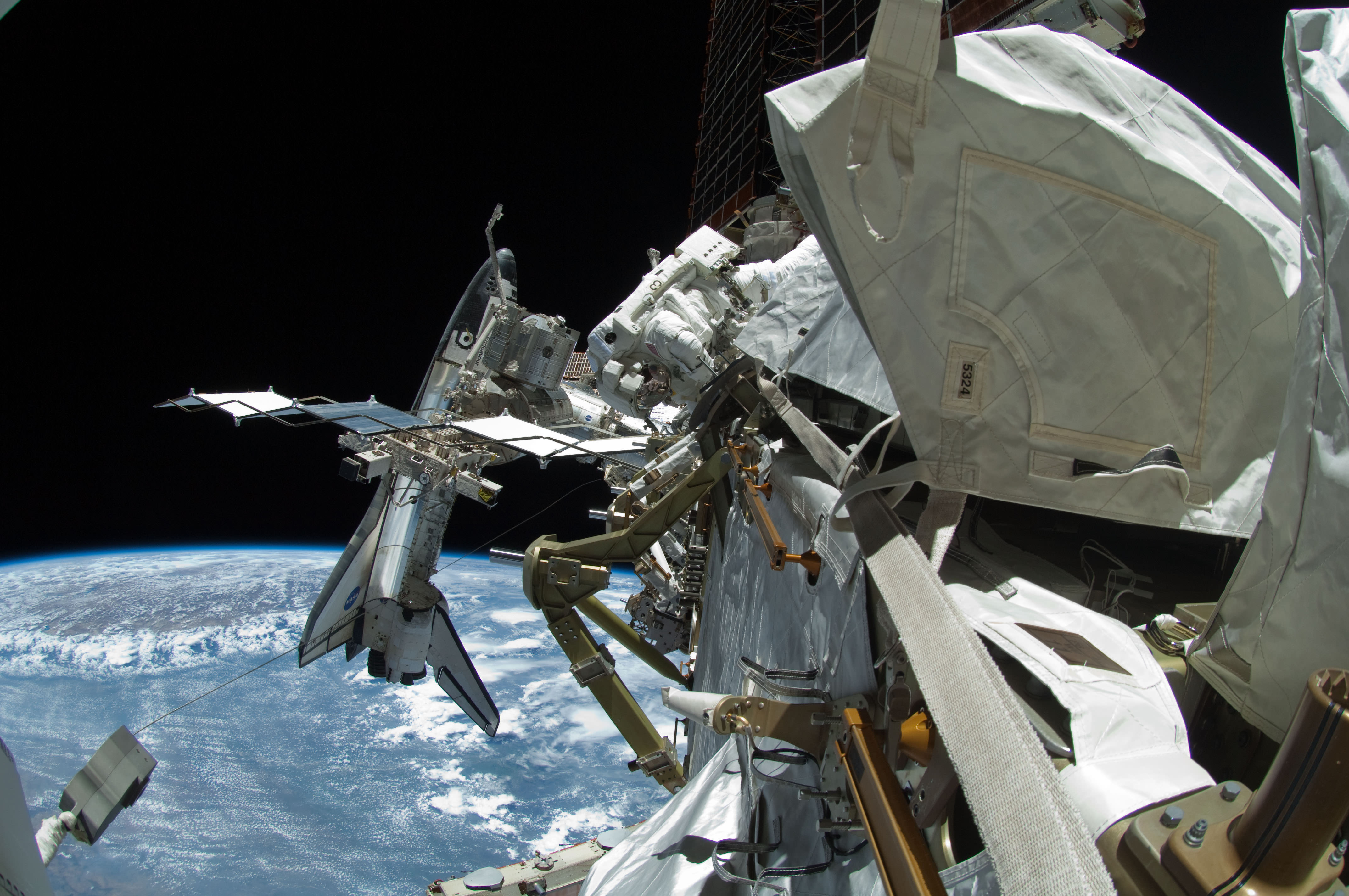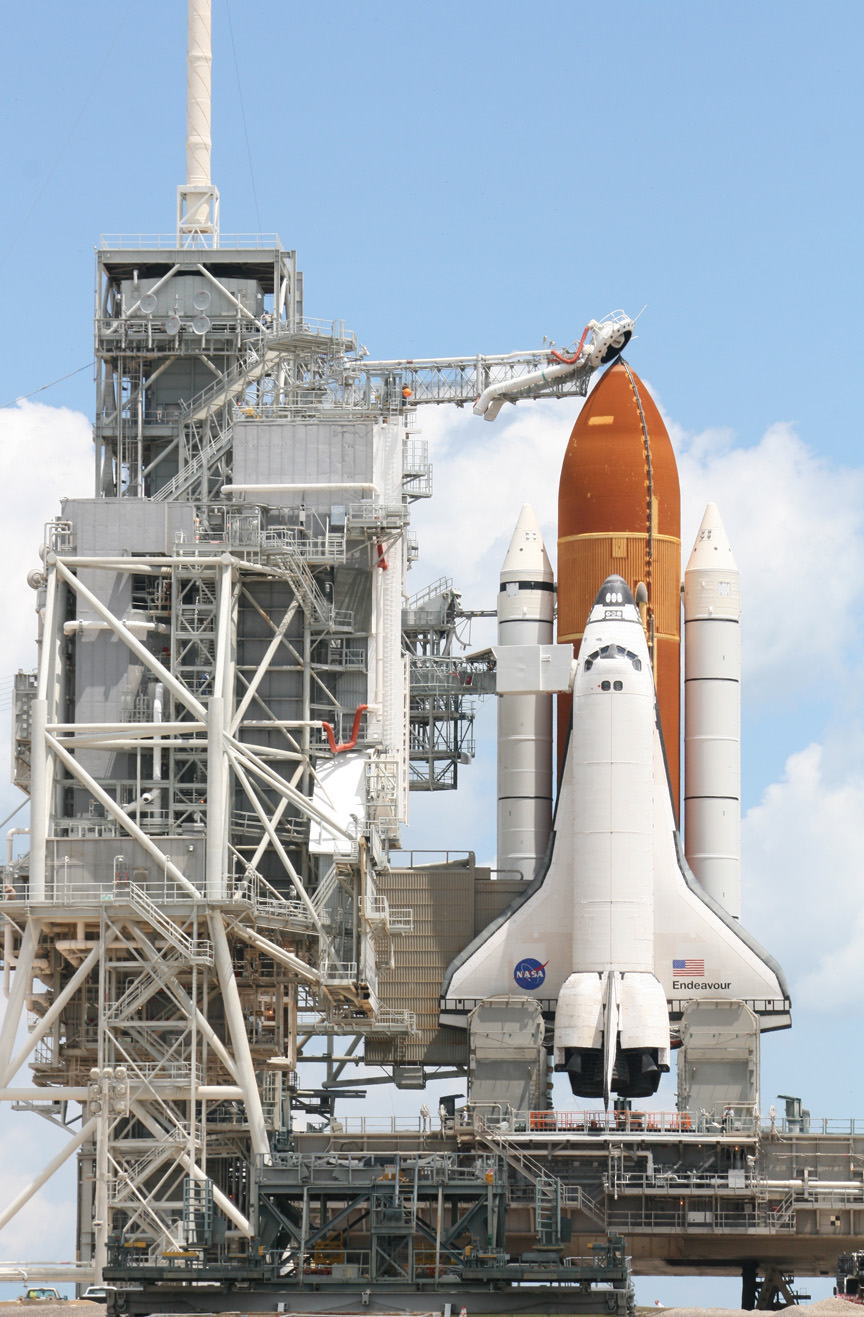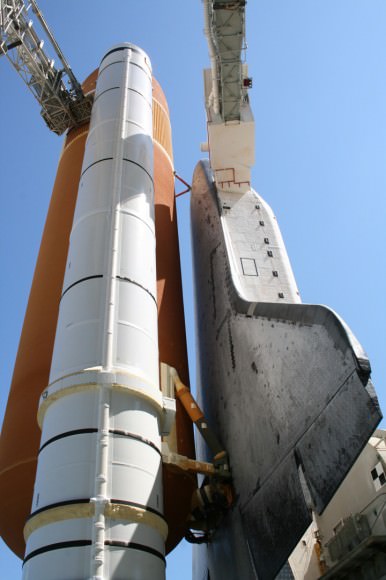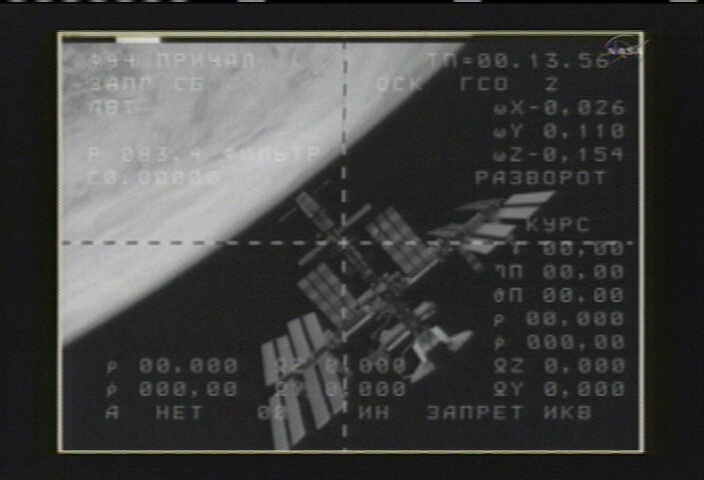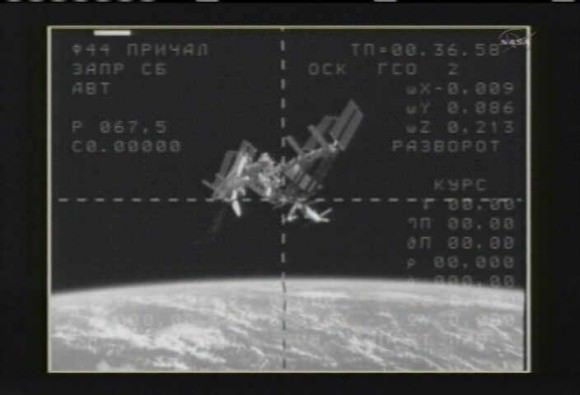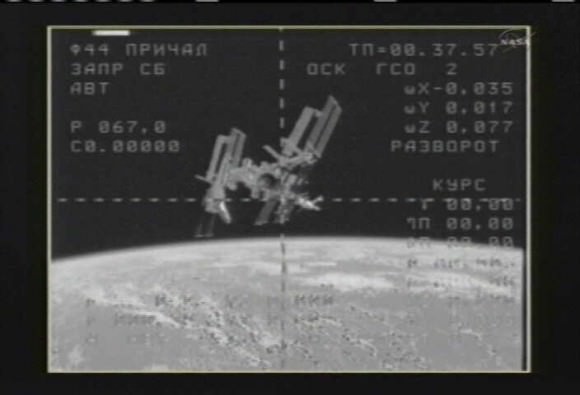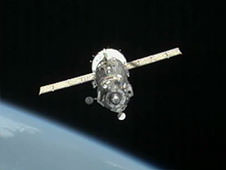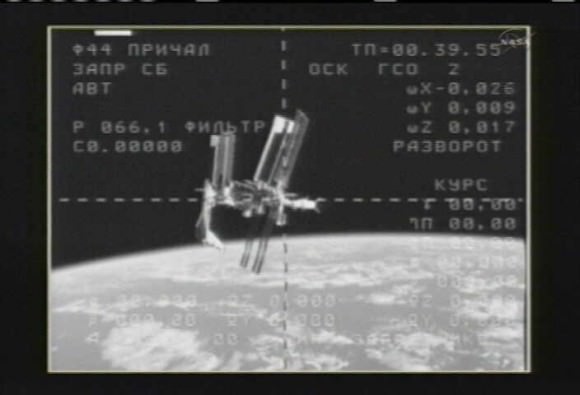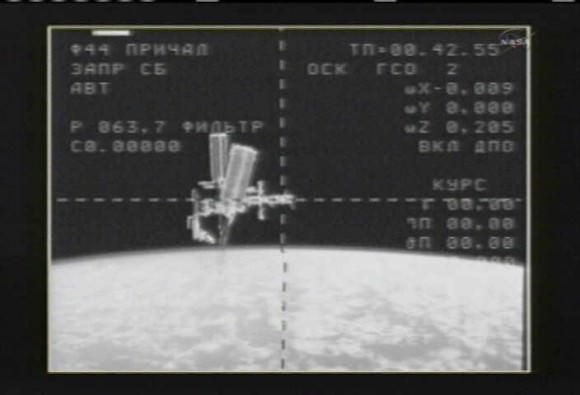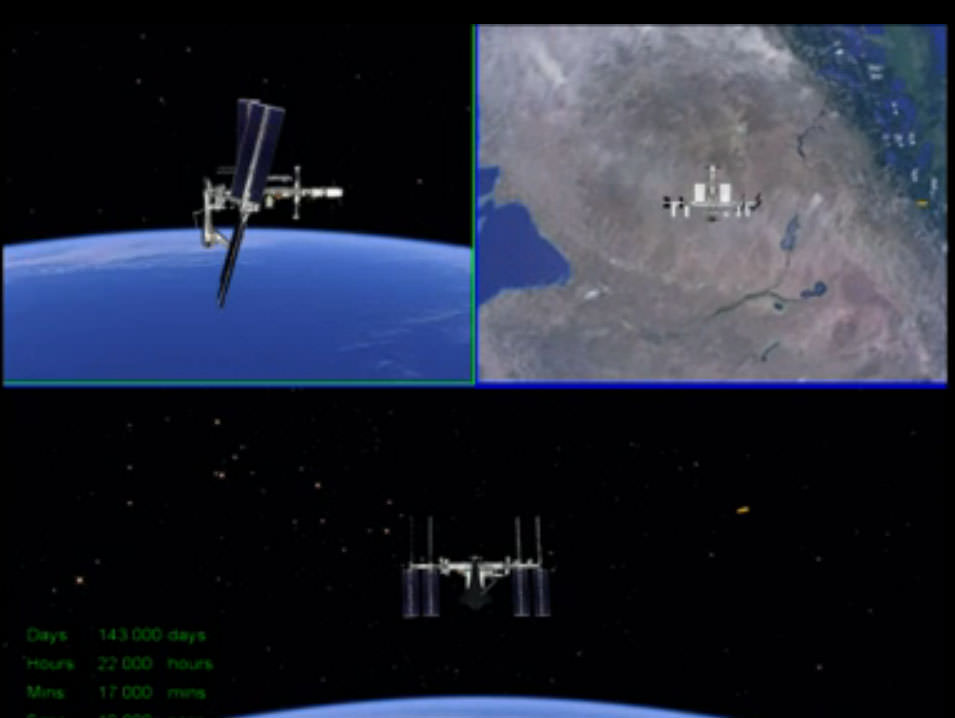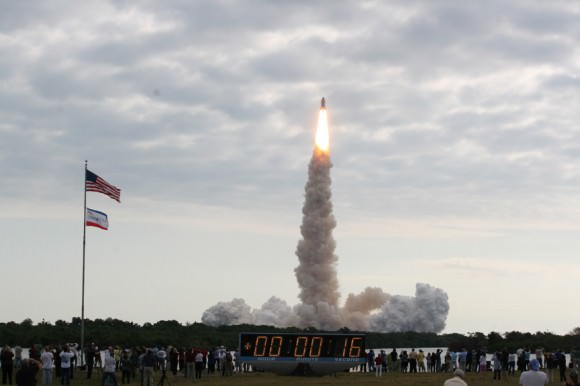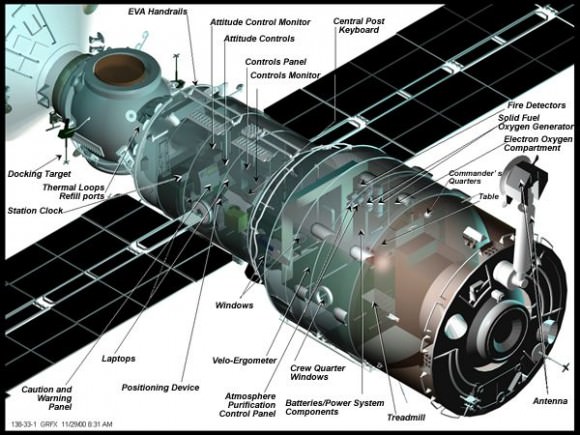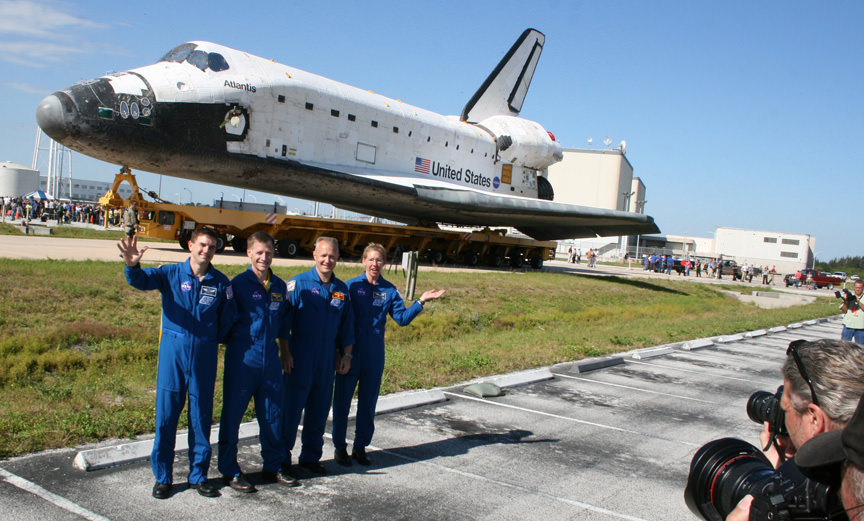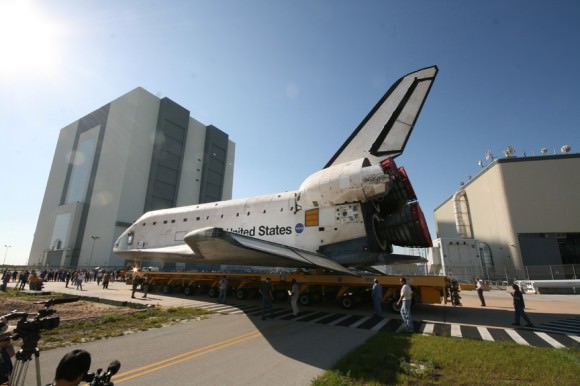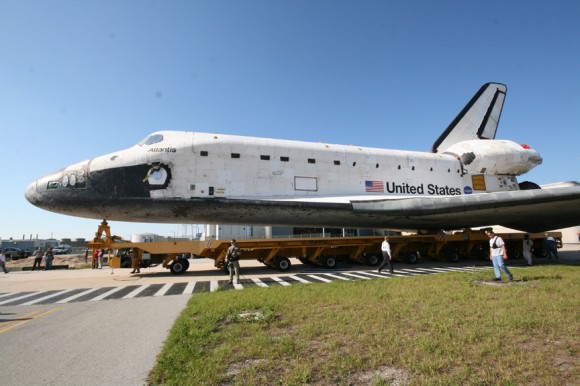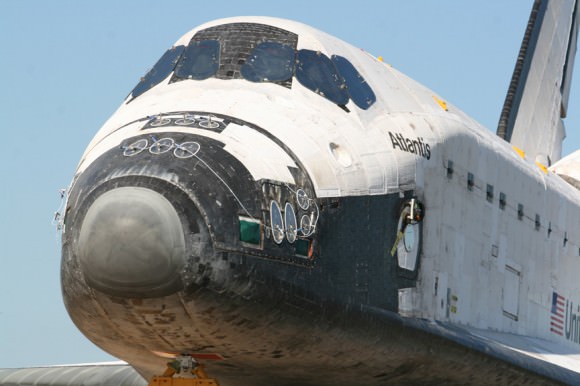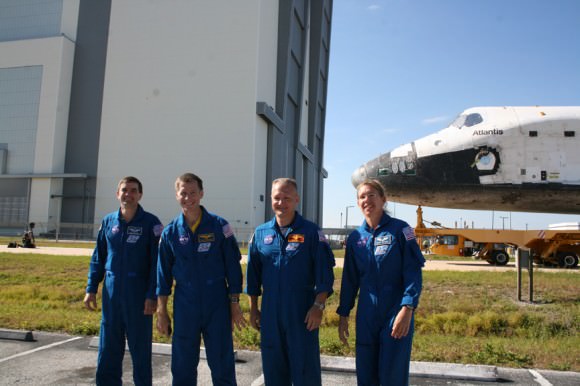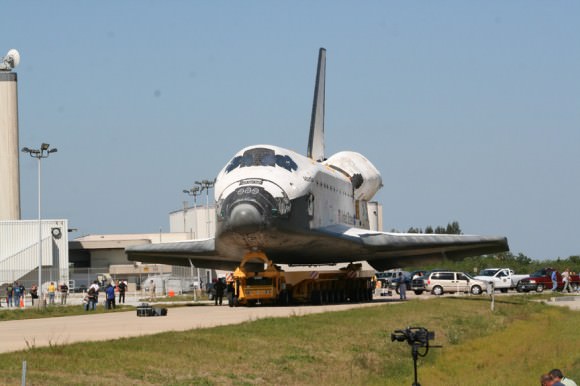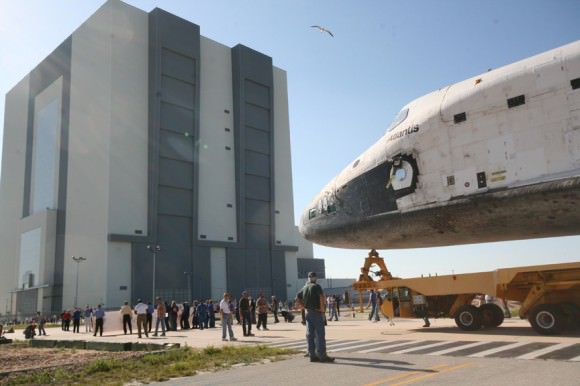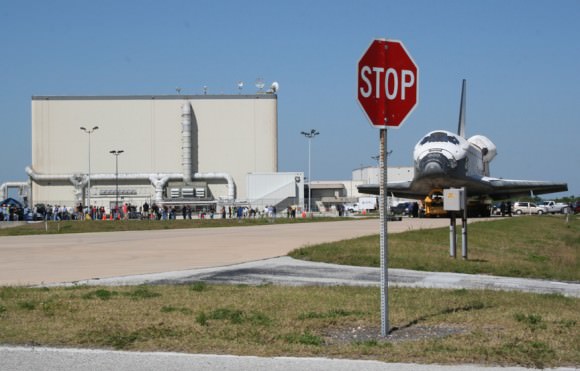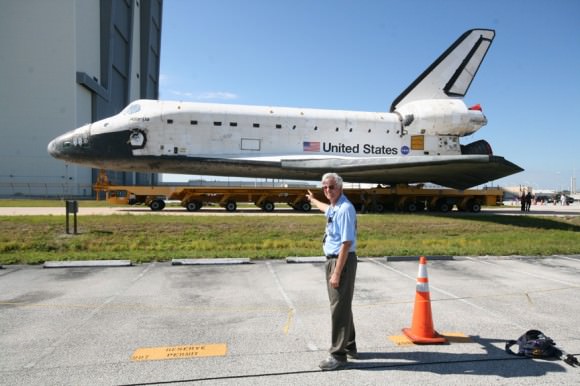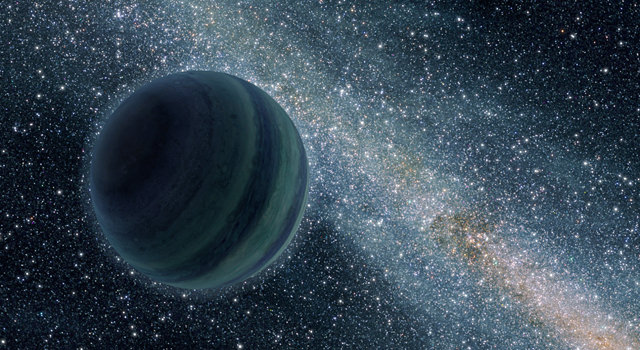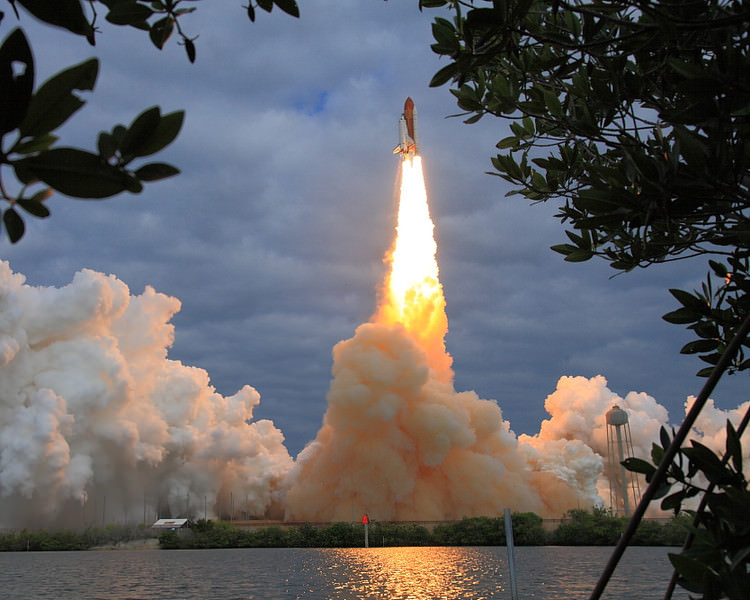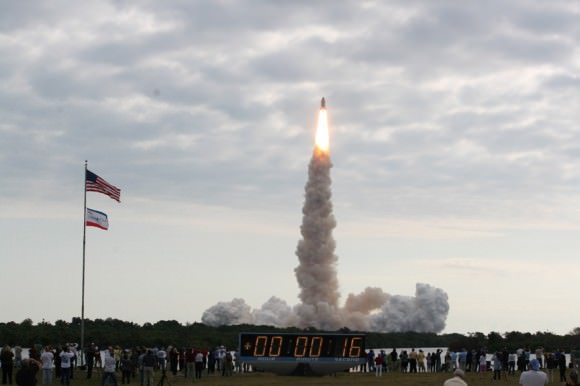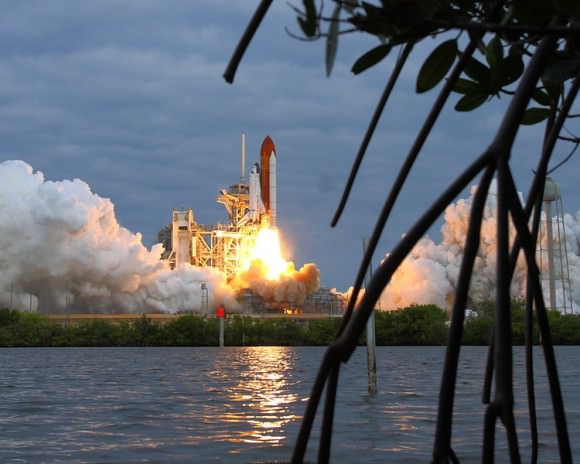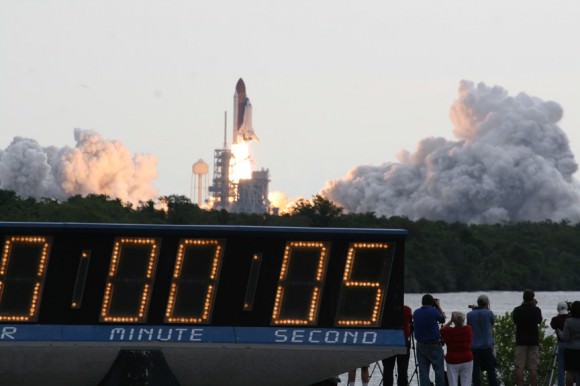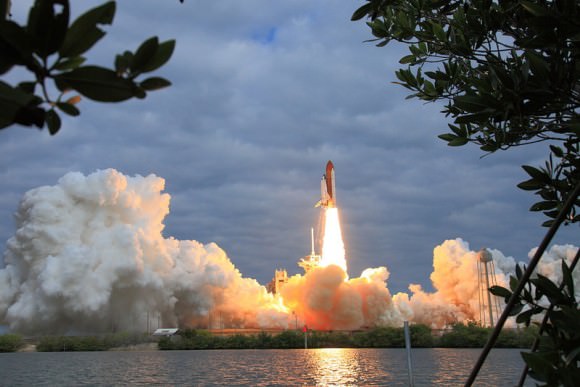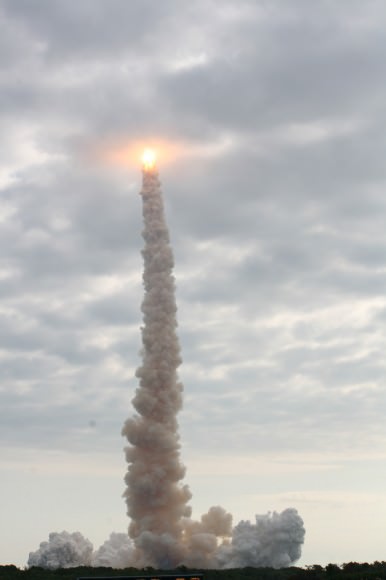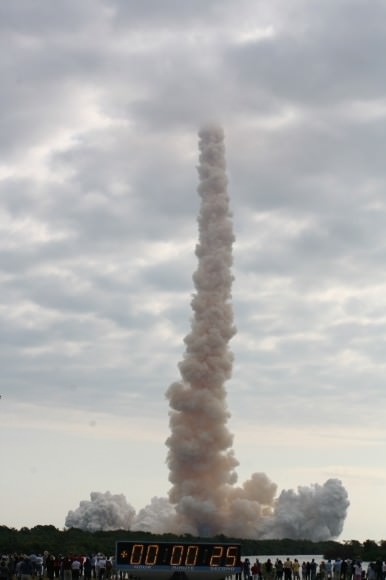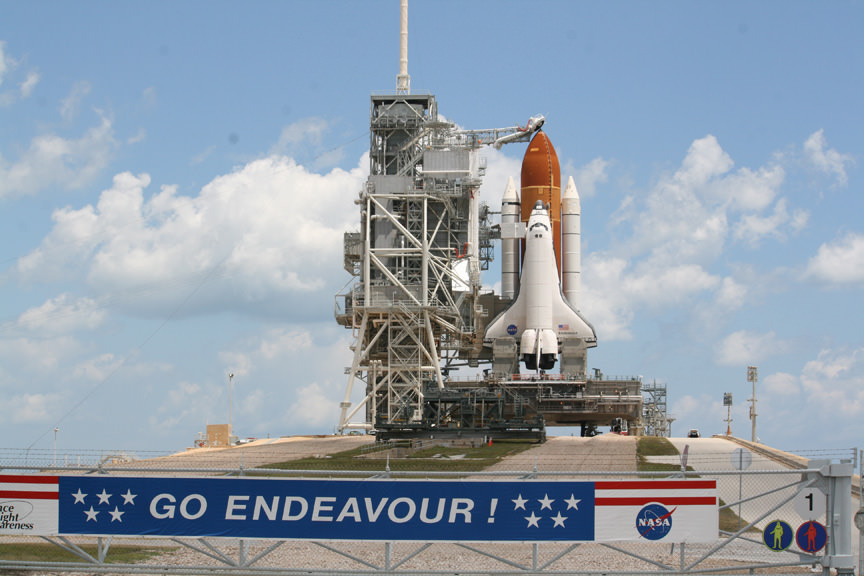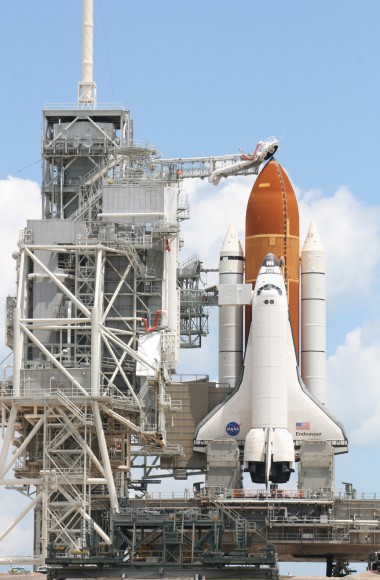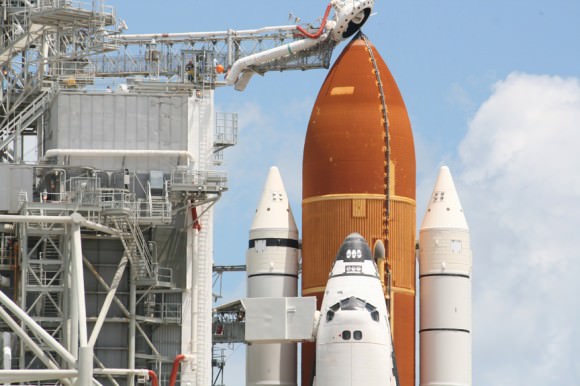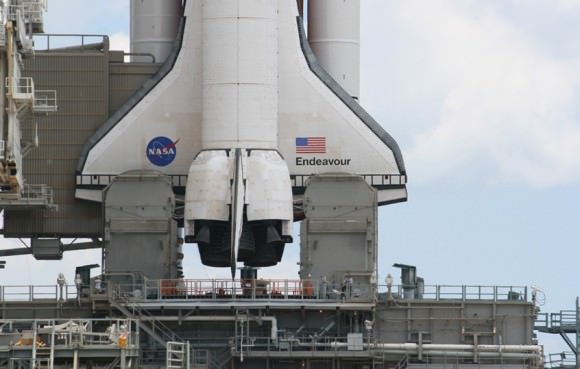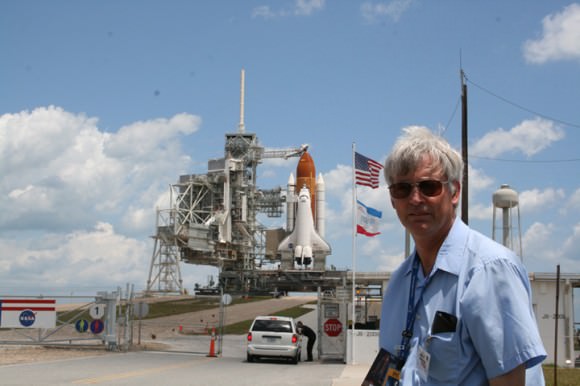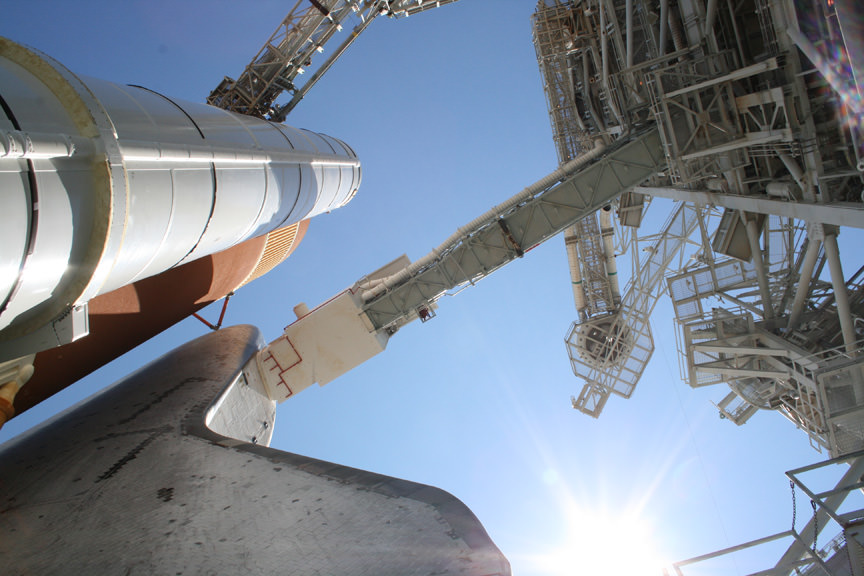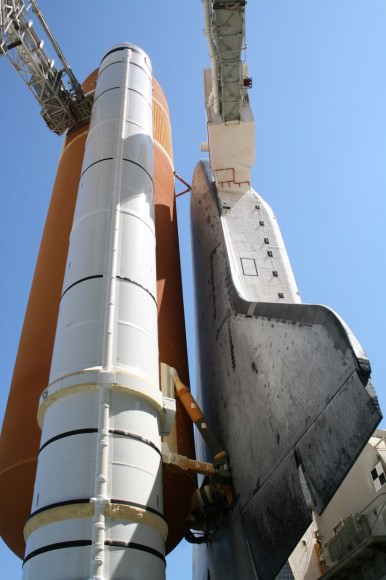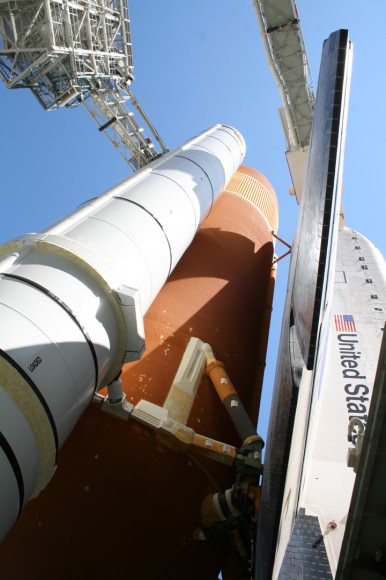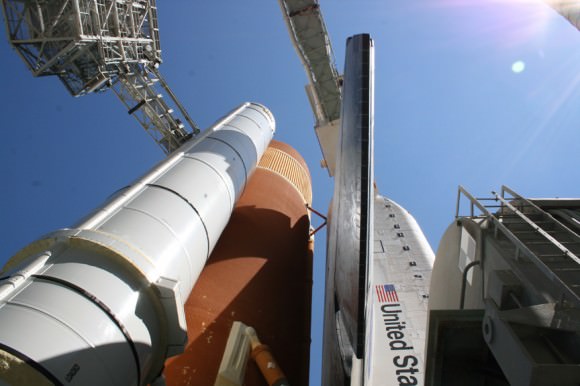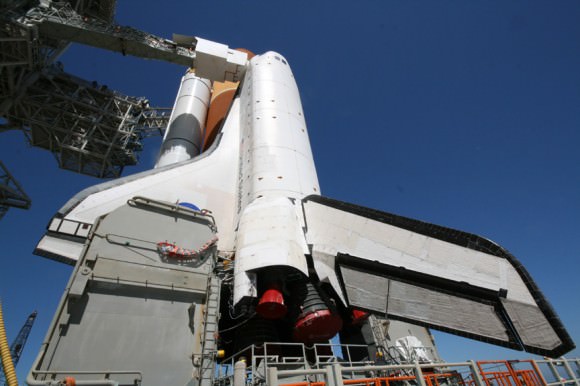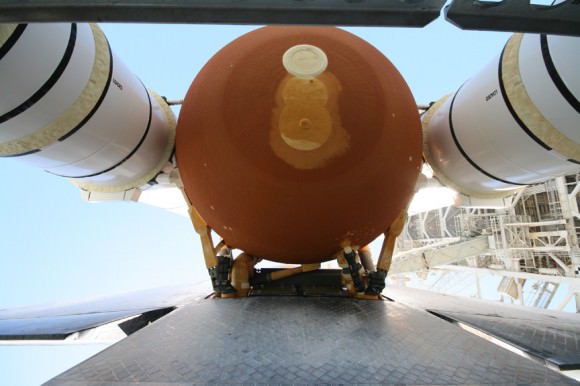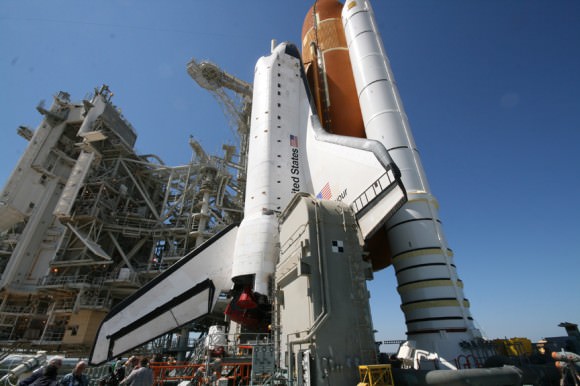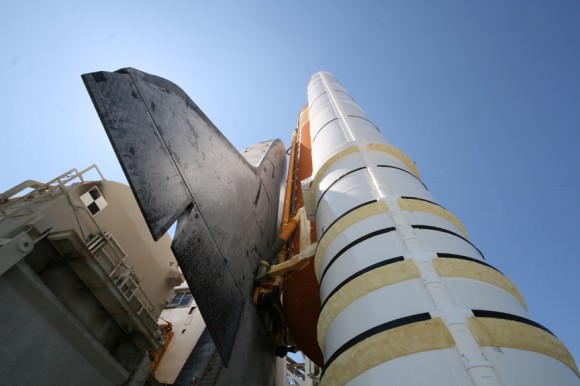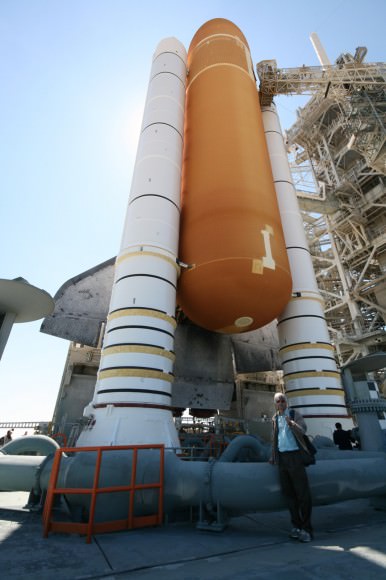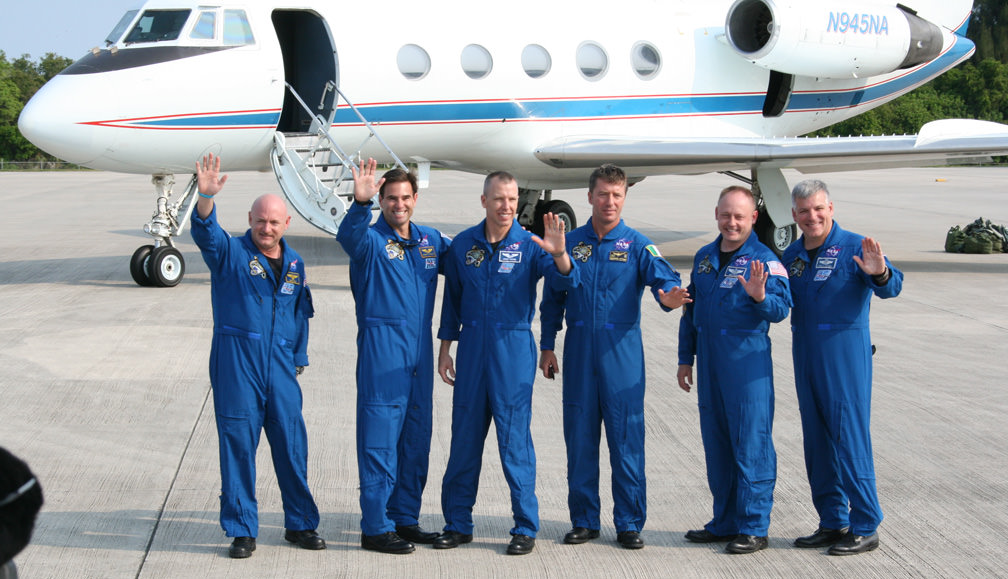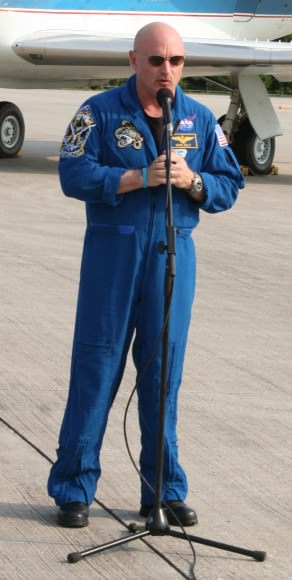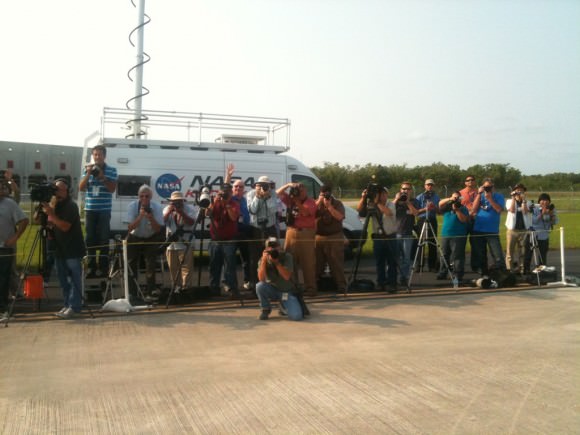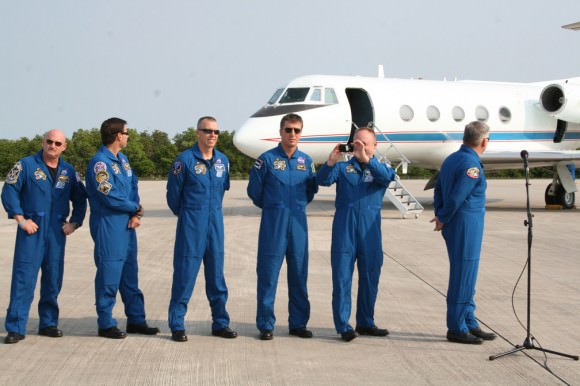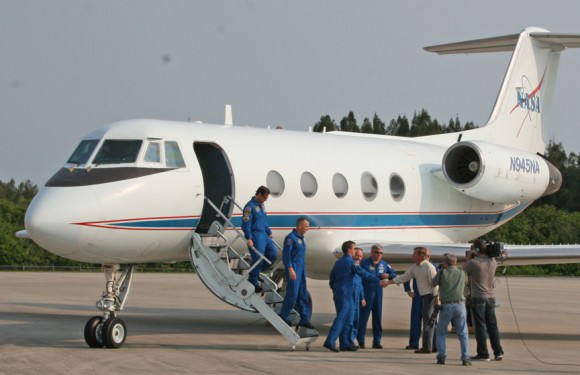[/caption]
Absolutely remarkable exterior panoramic photos of the ISS and tributes by Shuttle Astronauts marked two major milestones in spaceflight history today, May 27; the last spacewalk ever by Space Shuttle Astronauts and the formal completion of the US segment of the International Space Station after 12 years of construction.
Today’s spacewalk by shuttle Endeavour Astronauts Mike Fincke and Greg Chamitoff was the last ever outing in the three decade history of NASA’s Space Shuttle Program.
Check out the breathtaking photos taken by the astronauts today showing a wide angle view of the complex, including all of shuttle Endeavour at one end and a Russian Soyuz at the other end – backdropped by Earth.
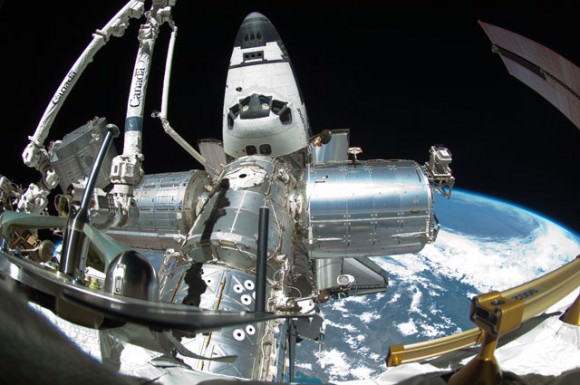
This image was photographed by a spacewalker, using a fish-eye lens attached to an electronic still camera, during the STS-134 mission's fourth extravehicular activity (EVA). The blackness of space and Earth's horizon provide the backdrop for the scene. Credit: NASA
The seven-hour, 24-minute spacewalk was the fourth and final EVA of the STS-134 mission and simultaneously finished the assembly of the US portion of the orbiting lab complex.
The primary objectives of the spacewalk were to attach Endeavour’s 50-foot-long Orbiter Boom Sensing System (OBSS) and install a new grapple fixture to make the OBSS available to significantly extend the reach of the space station’s robotic arm. The OBSS was used to examine the shuttle’s heat shield tiles. But they are no longer needed aboard the shuttles since they are being retired and was therefore permanently handed over from Endeavour to the station.
This spacewalk was the 159th in support of assembly and maintenance of the ISS which now totals more than 1000 hours of astronaut and cosmonauts work time.

On today's spacewalk @Astro_Taz took the most amazing #ISS px ever Can't wait to see @Astro_Paolo 's from Soyuz.
Gregory Chamitoff marked the milestones with these words of tribute; “At this time, now that we’re almost done here, I wanted to say a few words. This is the last flight of the space shuttle Endeavour and it’s also the last spacewalk of shuttle crew members in station assembly.
“It’s kind of fitting that Endeavour is here because Endeavour was the first shuttle to begin construction of the station and so it’s fitting that she’s here for the last mission to finish assembly.
“During this EVA, we tallied altogether collectively over a thousand hours of spacewalks as part of station assembly. Mike and I have the honor here to share this last spacewalk and of course, with all the folks working on the ground, the thousands of people who helped build this, working in the shuttle and the station programs.
“We’re floating here on the shoulders of giants. This space station is a pinnacle of human achievement and international cooperation — 12 years of building and 15 countries. And now it’s the brightest star in the sky and hopefully the doorstep to our future. So congratulations everybody on assembly complete,” said Chamitoff.
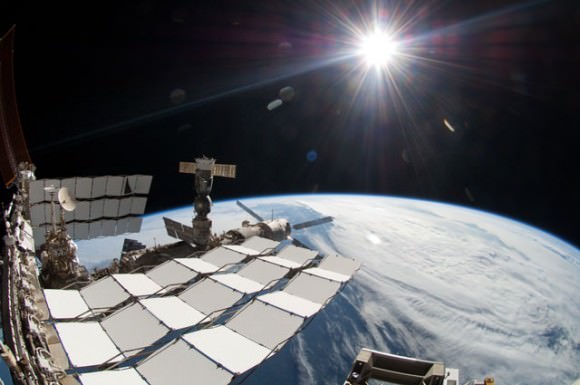
This image was photographed by a spacewalker, using a fish-eye lens attached to an electronic still camera, during the STS-134 mission's fourth EVA on May 27, 2011
From inside the Quest airlock, Mike Fincke took his turn and added these comments, “I wanted to say congratulations to the shuttle program for all the wonderful successes we’ve had over the past 30-something years. It’s a privilege that Endeavour’s hosting the last spacewalk by a space shuttle crew. So congratulations to the EVA development teams. We’ve come a long way. From me and Greg and the rest of the crew, congratulations.”
Today, Fincke also claimed the record for most time in space by a US astronaut, surpassing Peggy Whitson’s record of 377 days in space.
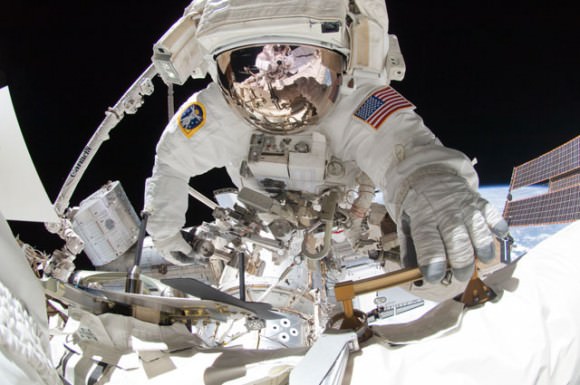
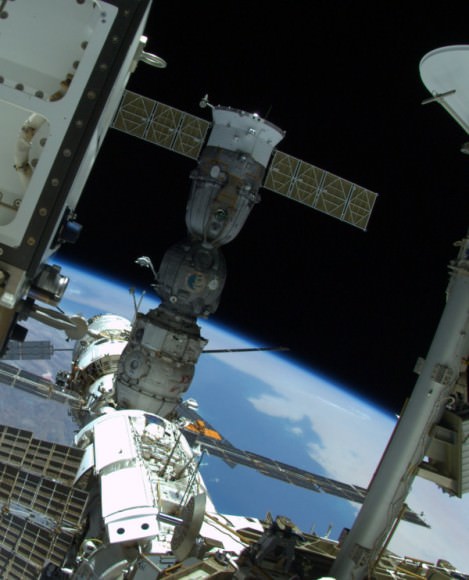
Our ride home 4 months from now Px from @AstroIronMike on today's spacewalk #NASA #ISS #FromSpace, tweets ISS Astronaut Ron Garan
See more images at NASA’s Human Spaceflight webpage gallery, and NASA’s Image of the Day gallery.
Read my related stories about the STS-134 mission here:
Awesome Hi Def Launch Videos from Endeavour
Spectacular Soyuz Photo Gallery shows Unprecedented View Of Shuttle Docked at Station
Ultimate ISS + Shuttle + Earth Photo Op Coming on May 23 from Soyuz and Paolo Nespoli
Endeavour Blasts Off on Her 25th and Final Mission
Endeavour Unveiled for Historic Final Blastoff
Looking to the Heavens with Endeavour; Launch Pad Photo Special
Endeavour Astronauts Arrive at Cape for May 16 Launch
NASA Sets May 16 for Last Launch of Endeavour; Atlantis Slips to July
Endeavour’s Final Launch further delayed another Week or more
On the Cusp of Endeavour’s Final Flight
Brush Fires Erupt at Kennedy Space Center during Endeavour’s Last Countdown
Commander Mark Kelly and STS-134 Crew Arrive at Kennedy for Endeavour’s Final Flight
President Obama to Attend Endeavour’s Last Launch on April 29
Shuttle Endeavour Photo Special: On Top of Pad 39A for Final Flight
Endeavour Mated to Rockets for Last Flight Photo Album
Endeavour Rolls to Vehicle Assembly Building for Final Flight

